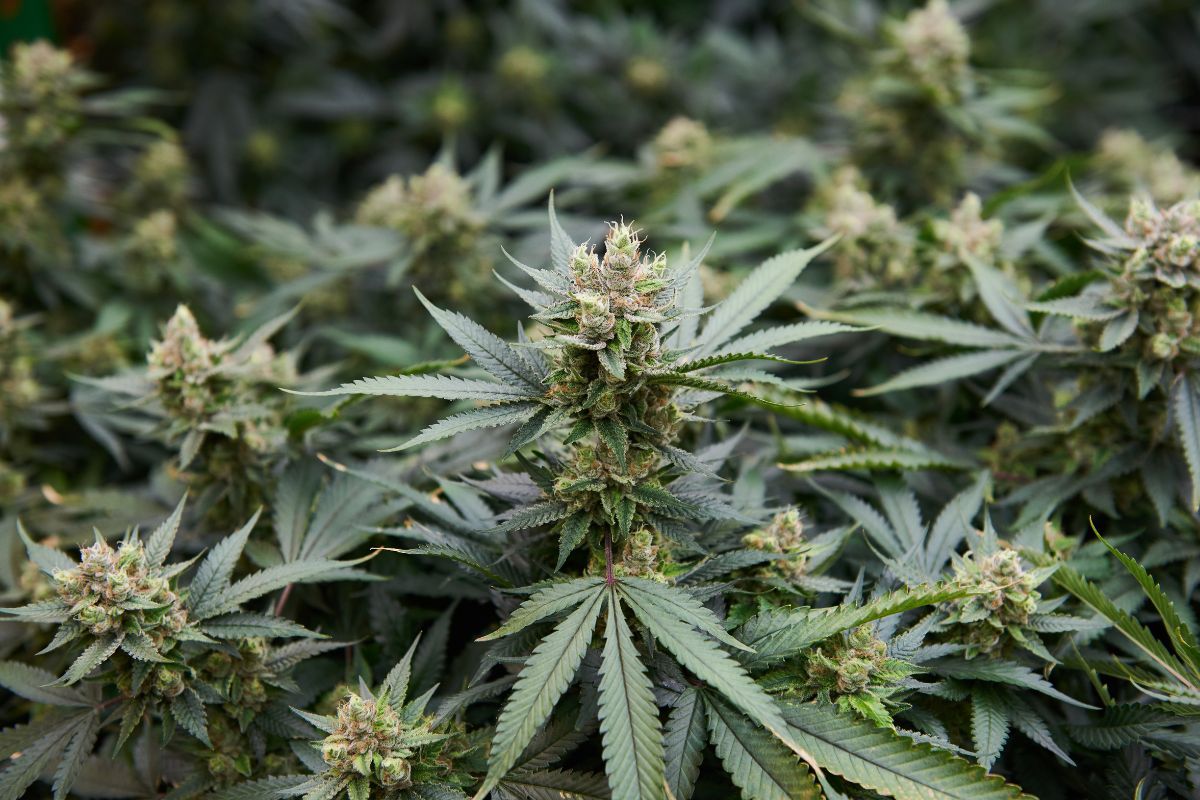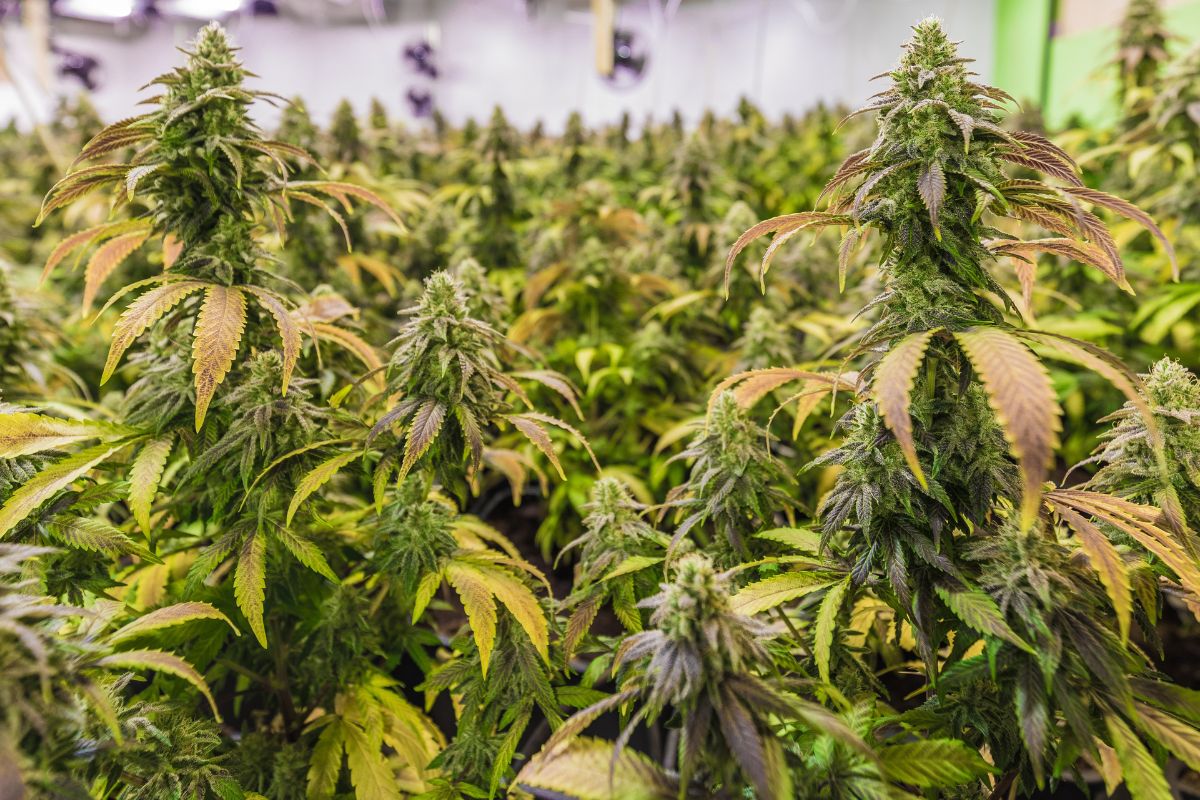We occasionally recommend products we love and might be paid a share of the sale.
If you’re thinking about growing marijuana inside, there’s a high chance that you’re going to need to top your plant.
You most likely need to top them several times, but this raises the question, how often should you top a marijuana plant, and is it possible to top a plant too much?
We’ll cover the answers in this post, going over what topping involves, its pros and cons, and the steps you should follow to successfully top your weed plants.
How Often Should You Top Your Marijuana Plant?
You can top your weed plant as many times as you wish, but know that each time you do so, the plant will need between one and two weeks to recuperate from the process. Essentially, each topping will increase the period to harvest.
Topping also boosts the number of bud sites, but this also extends the growth time of the buds, along with decreasing their size. You will need to figure out the best balance for your particular plants.
This is why there is no one number of times everyone should be topping their plant, as every growth is different. Despite this, you can work out what your optimum time for your plant is with a few steps, which we’ll get into below.
What Does Topping Involve?
Topping involves pruning the growing tip from the primary stem of a marijuana plant. This is known as an HST (High-Stress Training) technique, which is a popular growth approach with outdoor and indoor growers.
Looking for a low-stress training (LST) option for cannabis plants?
Topping replaces the principal main bloom with an even canopy and bristly form. Several marijuana producers believe this improves the plant’s yield.
The aim of topping a marijuana plant is to alter its growth arrangement and shape to increase its ultimate harvest amount.
If a marijuana plant isn’t topped, marijuana typically displays apical dominance. This involves the tip of the plant being visibly taller and distinct, compared to the remainder of the plant.
Apical dominance looks like a taller middle branch encircled by smaller ones, similar to a Christmas tree. This has an advantage, as every branch receives an almost equal amount of sunlight, as the sun moves across the sky.
However, indoor growers can have an issue with this, as they tend to use one light source held in place in their cultivation room.
This can result in a few branches being closer to the light source compared to others, affecting the light’s strength. This also leads to a few buds being in shade, affecting their growth ability.
Despite some experienced home growers seeing success with topping, the technique isn’t advised for every cannabis strain or growing circumstance.
Cannabis Topping Technique
Cannabis topping is usually carried out after the cannabis plant has grown between three and five nodes. A lot of people experienced with the technique like to wait until five nodes have grown before removing the apex.
The plant will have obtained decent height, root size, and strength at this point, which makes it likely to survive the high-stress process.
Cannabis plants should be four to five weeks old at this point, but remember that various marijuana strains develop at different paces during the initial few weeks.
The blades used for this technique need to be very sharp and very clean. Blunt blades can result in a jagged cut, which won’t have any advantages. Sharp horticulture scissors or a razor are best for this.
The growing apex will be removed with a sharp tool, somewhere between the third and fifth nodes.
Try to cut a few millimeters beyond the side branches. This will prevent harming the smaller shoots located between the side branches and the primary stalk.
These little side sprouts will start to grow faster and supersede the principal bloom.
A few growers may choose to top the side sprouts, but make sure that you wait for one to two weeks before you try this. This will give you four primary tops, instead of the main one.
Topping Advantages For Indoor Plants
Topping indoor plants leaves you with a smaller, shaggier cannabis plant. Its canopy will be even and flat, instead of the primary middle bloom being the tallest part of the plant.
Indoor growers will see that as their plant’s primary bloom generates an even canopy, a larger number of blooms receive optimum light levels. This means that the light is used more efficiently.
This can lead to plentiful cannabis harvests! Bear in mind that untopped marijuana plants will have one main bloom, but topped plants may have two middle blooms, or even four if you top the plant once more.
Topping Advantages For Outdoor Plants
Several outdoor cannabis growers may find that particular strains grow too tall. Sativa is an example of this, as their seeds can result in plants that are three to four meters in height.
This can be a problem when growing plants on a patio or garden, as these tall plants are easily perceptible. Topping these marijuana plants once, or more than once can be a good way to control their height.
Disadvantages Of Topping Cannabis Plants
The greatest disadvantage of topping is that marijuana plants will need recovery time. This means that the vegetative growth stage increases, so you’ll need to wait longer until harvest. The stage will keep increasing the more you top the plant.
If you’re planning on topping your plants, be prepared for a four to six-week vegetative growth stage, at minimum. If the plant doesn’t receive enough extra time, the result will be smaller buds and spindly growth.
Additionally, topping gives a cannabis plant an inverted triangle structure, so it is top-heavy. You may need to support the plant in some way, such as stakes or a screen.
Is Super Cropping The Same As Topping?
Super cropping and topping are cannabis growth techniques which both have different processes. As you now know, topping the plants involves removing the growing tip to generate a bushier plant, with extra growth areas.
Super cropping is a technique that involves lightly compressing the plant’s stem between the finger and thumb. This softer stalk will be bent at 90° and secured in place, so it won’t grow vertically.
Super cropping can be used by outdoor and indoor cannabis growers to decrease its growth height. You can then put many bud points at an equal distance away from an indoor grow light. This is ideal for future harvests.
Another similar method is called ScrOG. Learn how to ScrOG cannabis plants.
Improve Yield By Lollipopping
Lollipopping involves removing lower branches on the plant that only generate smaller ‘popcorn’ buds.
If you leave the growth beneath the canopy, the plant will waste its energy on branches that won’t generate significant buds.
Removing these enhances airflow under the canopy, allowing the plant to use most of its energy on the primary higher blooms.
It’s a good idea to lollipop your cannabis plants. Make sure that you remove all of the growth on the bottom areas, which don’t receive enough light to generate buds.
The Bottom Line
You can top a marijuana plant as many times as you wish, but remember that the technique increases the time it needs in the vegetative growth stage.
Topping can be a good way to keep your plant’s height under control, as well as generate an even canopy with more buds.
Aim to fill your plant’s total growth area with as many buds as you can. This ensures that you end up with a plentiful amount of weed, as much as the plant can handle.
I’m an avid gardener and cannabis enthusiast. You can usually find me in my garden caring for my plants or at my computer crafting helpful blogs for my readers.
Contents



